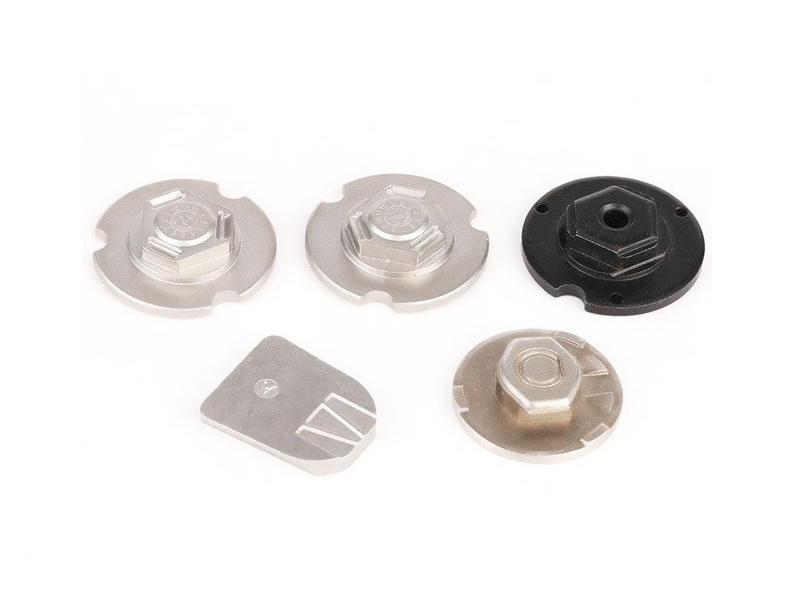Buttons and Connectors: Advancing Consumer Electronics with Powder Compression Molding
Introduction
Buttons and connectors are critical yet often overlooked components in consumer electronics, significantly impacting user experience, device reliability, and overall product lifespan. As consumer demand for higher quality, more durable, and visually appealing electronics continues to rise, manufacturers increasingly seek innovative methods to produce these small yet essential components efficiently and accurately.
Among various advanced manufacturing processes, powder compression molding (PCM) has emerged as an ideal solution for producing metal buttons and connectors. PCM technology offers exceptional precision, intricate design capability, material versatility, and cost-effectiveness, significantly enhancing consumer electronic devices' durability, functionality, and aesthetic appeal.
PCM Manufacturing Process for Buttons and Connectors
The powder compression molding process involves precise compaction of fine metal powders, such as stainless steels, copper alloys, or magnetic alloys, combined with specialized binding agents. The powder mixture is meticulously loaded into high-precision molds and compacted under controlled pressures to create precise green parts. This approach ensures uniform density, shape consistency, and minimal material waste.
Post-compaction, parts undergo critical thermal treatments—namely debinding and sintering. The debinding phase effectively removes binders without distorting the components. Subsequent sintering at elevated temperatures enhances mechanical properties, increases density, and strengthens the final metal parts. This thermal treatment ensures buttons and connectors achieve the required durability and functional performance for daily consumer electronics use.
Powder compression molding’s high repeatability and dimensional accuracy make it perfect for manufacturing buttons and connectors at high production volumes. PCM consistently achieves tight tolerances, facilitating smooth assembly and reliable operation within intricate electronic devices. A detailed explanation of PCM's advantages can be found in Neway’s PCM technology guide.
Typical PCM Materials for Electronic Buttons and Connectors
Choosing the right materials is crucial to the performance and longevity of buttons and connectors in electronic devices. PCM allows for diverse metal alloys, each providing specific advantages tailored to consumer electronics.
Stainless Steel alloys such as MIM-304 and MIM-316L are commonly used due to their excellent corrosion resistance, durability, and ease of finishing, ideal for buttons exposed to frequent user interaction.
Copper Alloys provide excellent electrical conductivity, making them ideal for connectors and charging ports. These materials ensure reliable electrical connections, enhance device performance, and prolong product life.
Magnetic Alloys like MIM-Fe-50Ni are used when specific magnetic properties are required, such as for specialized connectors and switches in electronic devices.
Low Alloy Steels offer cost-effective strength and durability, suitable for mass-produced components requiring consistent performance without compromising quality.
PCM’s versatility enables manufacturers to select optimal materials based on precise performance and budgetary requirements, enhancing overall device quality and user satisfaction.
Surface Treatments for PCM Buttons and Connectors
Surface treatments significantly influence the functionality, durability, and aesthetics of electronic buttons and connectors manufactured through PCM. Proper surface treatments protect components from corrosion, enhance wear resistance, improve electrical conductivity, and deliver attractive finishes.
Electroplating, including nickel and chrome plating, enhances corrosion resistance, improves appearance, and increases durability. Nickel plating ensures reliable electrical connections for connectors, while chrome plating adds aesthetic value and scratch resistance to visible buttons.
Black Oxide Coatings enhance corrosion resistance and reduce surface reflection, ideal for connectors or buttons requiring subtle, durable finishes.
Electropolishing provides a smooth, highly reflective finish that enhances visual appearance and improves corrosion resistance, especially suitable for premium electronic buttons exposed directly to users.
Physical Vapor Deposition (PVD) coatings offer superior surface hardness, corrosion protection, and aesthetic customization. This treatment enables electronics manufacturers to achieve stylish, high-end finishes on buttons and connectors, significantly enhancing consumer appeal.
Advantages of PCM for Buttons and Connectors
PCM offers numerous benefits for manufacturing electronic buttons and connectors:
High Precision: Achieves intricate and complex geometries with exceptional accuracy, ensuring smooth operation and easy integration into electronic devices.
Material Versatility: Allows selection from various metals and alloys, meeting specific requirements such as conductivity, magnetism, or corrosion resistance.
Durability and Reliability: Produces robust components that resist wear, corrosion, and deformation, ensuring extended product life and reliability.
Cost-Effectiveness: Reduces material waste and enables efficient mass production, significantly lowering production costs while maintaining quality.
Considerations in PCM Production for Electronics
For optimal results with PCM-produced buttons and connectors, careful consideration must be given to material selection, molding parameters, thermal processes, and surface treatments. Maintaining precise control over these factors ensures the final components consistently meet strict industry standards for quality and performance.
Manufacturers must also implement rigorous quality assurance measures, verifying dimensional accuracy, surface finish quality, electrical conductivity, and durability, ensuring the PCM-produced components meet consumer electronics requirements effectively.
PCM Applications in Consumer Electronics
PCM-produced buttons and connectors are extensively used in a wide range of consumer electronics, including:
Smartphones and Tablets: Durable, visually appealing metal buttons and connectors enhance user interaction and device reliability.
Wearable Devices: Compact, precise buttons ensuring user comfort and durability under daily wear and tear.
Computers and Peripherals: High-conductivity connectors and robust buttons providing reliable, long-term functionality.
Audio Equipment: Precise connectors ensuring consistent audio quality and robust user interaction through high-quality buttons.
Related FAQs
What makes powder compression molding ideal for consumer electronics buttons and connectors?
Which metals are best suited for PCM-produced connectors?
How do surface treatments enhance the durability and appearance of electronic buttons?
Can PCM manufacturing achieve precise tolerances required for electronic components?
Is powder compression molding cost-effective for mass-produced electronic components?

